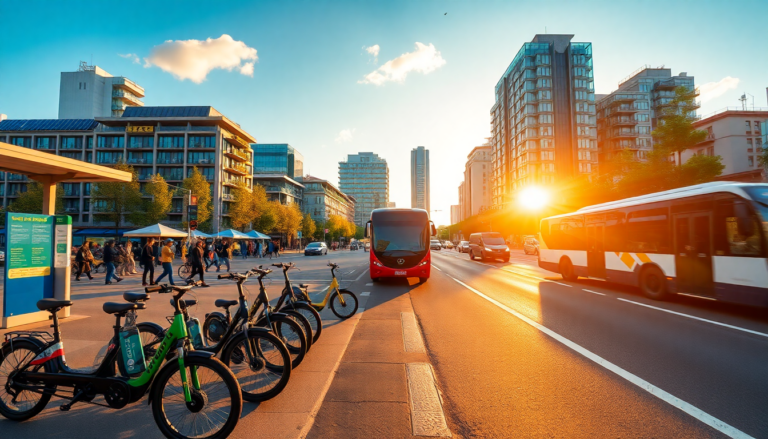Argomenti trattati
The landscape of urban mobility is experiencing a remarkable transformation. With cities facing challenges like increasing congestion, pollution, and safety concerns, the call for innovative solutions has never been more urgent. As urban areas continue to grow and evolve, this article explores the key factors shaping urban mobility today, particularly the integration of emerging technologies and strategies that can improve how we move people and goods throughout our cities.
Understanding the Urban Mobility Challenge
Urban mobility issues are complex and often tied to socioeconomic disparities that impact access to jobs, healthcare, and education. So, how do we tackle these challenges? It starts with developing mobility strategies that are tailored to the unique characteristics of each locality. This involves a deep dive into aspects like population density, existing public transport systems, and the overall street network.
As cities strive to implement effective mobility solutions, collaboration between public and private sectors becomes essential. By harnessing data and insights from various stakeholders, cities can create transportation networks that prioritize both accessibility and sustainability. The evolution of mobility technologies significantly influences these strategies, ranging from traditional public transport to cutting-edge shared mobility services.
The Shift Towards Technological Integration
In the world of automobile manufacturing, we’re witnessing a shift from a hardware-focused approach to one that emphasizes software—much like the smartphones we use every day. This evolution means over-the-air updates, enhanced connectivity, and improved user experiences, all aimed at boosting productivity for travelers.
Imagine a future where self-driving vehicles and robotaxis help reduce congestion and lessen environmental impact. By utilizing shared, autonomous electric vehicles, cities can not only free up discretionary income for residents but also tackle pressing issues related to pollution and safety. Plus, the rise of mobility as a service (MaaS) platforms allows users to plan, book, and pay for their journeys across various modes of transportation with ease, creating a seamless travel experience.
Electrification and the Future of Mobility
Electrified vehicles (EVs) are quickly becoming a key player in the fight against urban pollution. With substantial investments pouring into electric battery technology, we’re seeing improvements in both the range and affordability of EVs. And let’s not forget the advancements in charging infrastructure, which are making electric vehicles more accessible to everyone.
Integrating EVs into urban mobility strategies offers a twofold benefit: they not only contribute to cleaner air but also promote sustainable practices among city residents. As more cities embrace electrification, it’s crucial to consider how these vehicles can work alongside existing public transport systems to create a cohesive mobility framework.
Looking Ahead: Trends and Predictions
What does the future hold for urban mobility? In the coming years, we can expect continued advancements in mobility technologies, especially as cities adapt to changing demographics and growth patterns. Policymakers and industry leaders need to stay agile, ensuring their strategies align with emerging trends in transportation and urban planning.
Moreover, fostering collaboration between cities and technology providers will be vital to unlocking the full potential of urban mobility solutions. By prioritizing inclusive and sustainable practices, cities can transform their transportation systems into efficient networks that meet the demands of the 21st century. So, are we ready to embrace this change? The future of urban mobility is on the horizon, and it’s time to get involved.

